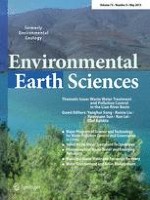01-05-2015 | Original Article
Evaluation of land desertification from 1990 to 2010 and its causes in Ebinur Lake region, Xinjiang China
Published in: Environmental Earth Sciences | Issue 9/2015
Log inActivate our intelligent search to find suitable subject content or patents.
Select sections of text to find matching patents with Artificial Intelligence. powered by
Select sections of text to find additional relevant content using AI-assisted search. powered by
